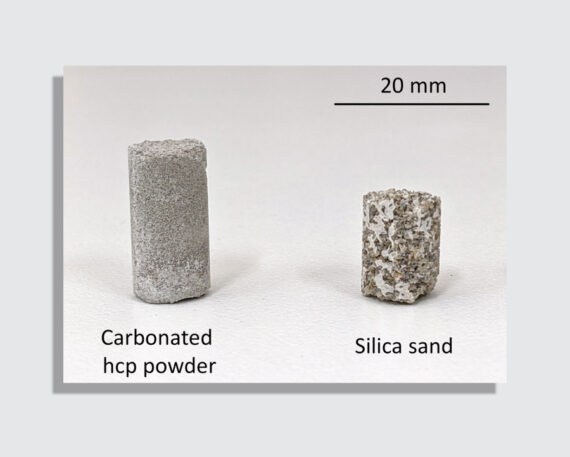
08 Oct Most concrete produces pollution. This concrete is made of it
Concrete is the world’s most widely used building material, and it’s also one of the world’s biggest sources of carbon emissions. The production of all the concrete for our sidewalks, buildings, and bridges is responsible for about 8% of the carbon dioxide emitted into the atmosphere globally. In the face of a changing climate, the material that builds our world is the same one destroying it.
A new type of concrete aims to reverse that cycle. Researchers at the University of Tokyo have developed a form of concrete that is made using waste from previously used concrete combined with carbon dioxide pulled from the air.
“Our concept is to acquire calcium from discarded concrete, which is otherwise going to waste,” says Ippei Maruyama, a professor in the university’s department of architecture who codeveloped the concrete with Takafumi Noguchi. The waste material is then combined with CO2 captured from industrial exhaust or directly from the air to form calcium carbonate, a hard material that becomes the basis of new concrete. The researchers suggest that with further development, this type of concrete could be carbon neutral or carbon negative.

The raw materials for this novel concrete are abundant. Every year, more than half a billion tons of construction and demolition waste ends up in U.S. landfills, including a significant amount of concrete. Carbon capture technologies have been in use for decades, and the world’s largest capture facility just opened in Iceland.
Concrete’s carbon problem is well known, even by the concrete industry itself, which has been exploring new ways of reducing its environmental impacts. Architects and designers have also looked at ways of reusing chunks of concrete from demolished buildings. Maruyama and Noguchi’s approach of using captured carbon dioxide and crushed concrete diverted from landfills offers a new path for producing this key building material using local and widely available resources.
For now, the new waste-based concrete doesn’t have enough compressive strength to completely replace conventional concrete in large-scale buildings and infrastructure projects, but the researchers suggest its density can be improved to support the weight of single homes and other small projects. They hope to build a full-scale mockup structure using the new concrete by 2025, though the amounts they’ve been able to produce so far are measured in centimeters. With additional development, though, this creative approach to concrete production could help turn one of the world’s most intractable problems into a climate solution.
Source: Fast Company




Sorry, the comment form is closed at this time.